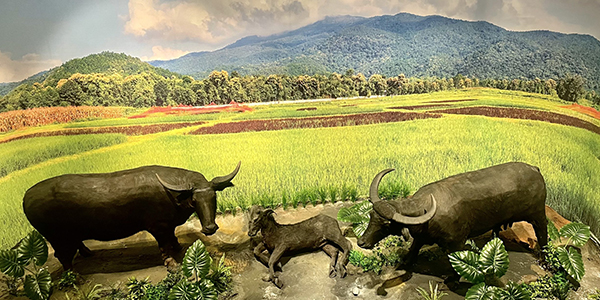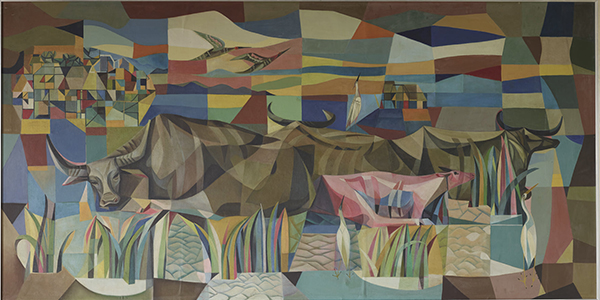| ‹ | Carabao Exhibit |
› |
|---|
The National Museum of Natural History has unveiled a new exhibition featuring a family of carabaos from Nueva Ecija. The taxidermists and scientists at the museum meticulously prepared these carabaos, which can now be admired on the 5th level of the museum's staircase landing. Carabaos, also known as swamp buffaloes, are large mammals characterized by their gray to dark gray color and distinct curved horns resembling the letter "C." Originating from the Malay and Chinese settlers around 300 BC, carabaos have come to symbolize the Asian way of life and hold immense value in Philippine agriculture.
With their robust build and strength, carabaos are essential in rural areas, particularly in rice farming. These creatures serve as "living tractors," tirelessly plowing and harrowing the muddy rice paddies, making them indispensable in this agricultural practice. Moreover, carabaos play a significant role in the Philippine economy, contributing to agriculture and providing essential resources such as meat, dairy products, and hides. They also serve as a sustainable means of transportation in remote rural areas. In some communities in the mountainous regions of Luzon, carabaos hold a prestigious status, often featured in elaborate feasts that symbolize the social standing of the upper rank. Rituals and ceremonies, including weddings and healing practices, involve the prominent display of carabao heads as offerings to spirits.
To honor Saint Isidore, the patron saint of Filipino farmers, and pay tribute to the diligent carabaos, some rural towns in the Philippine lowlands organize a grand carabao festival in May. This event celebrates the hard work and importance of carabaos in agriculture, highlighting their crucial role in sustaining the livelihoods of many communities throughout the country.

